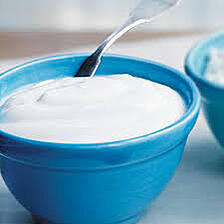Yoghurt and Diabetes Risk?
A recent study has found that yoghurt consumption is associated with reduced risk of developing type two diabetes!
The three pooled prospective cohort studies had an overall sample size of more than 41,000 people. Within the cohort, 15,156 people were diagnosed with diabetes during the follow up period. Whilst dairy products overall showed no association, yoghurt, once adjusted for other risk factors, was found to be associated with lower risk of type two diabetes.

In a previous post, I discussed the effect of probiotics on obesity and insulin levels. The results from the studies mentioned above indicate similar factors are at play, rather than the nutrient profile of dairy products themselves, as previously thought.
28g of yoghurt is equivalent to just under 2 metric tablespoons; considering a serve of yoghurt is considered to be 200g (from a calcium point of view), this is not a lot!
Furthermore, not all yoghurt is created equally. Some are incredibly high in sugar, some very high in fat, others have very little probiotic activity at all. What do I recommend? Choose a plain yoghurt as often as possible, flavouring it yourself with fresh or frozen fruit, and choose your portion size based on what else is going into your diet.
Yoghurt is wonderfully versatile, and can be used on breakfast, as a dressing on salad, as a dip, mixed into dough for baking, or as a simple snack.
How do you like your yoghurt?
Chloe McLeod is a dietitian at BJC Health.
This blog focuses on diet & nutrition generally and diet & nutrition in relation to the treatment of arthritis and arthritis-related diseases. Contact us if you’d like our help in managing diet-related health issues.
*Thanks to www.positivemed.com. for the picture

